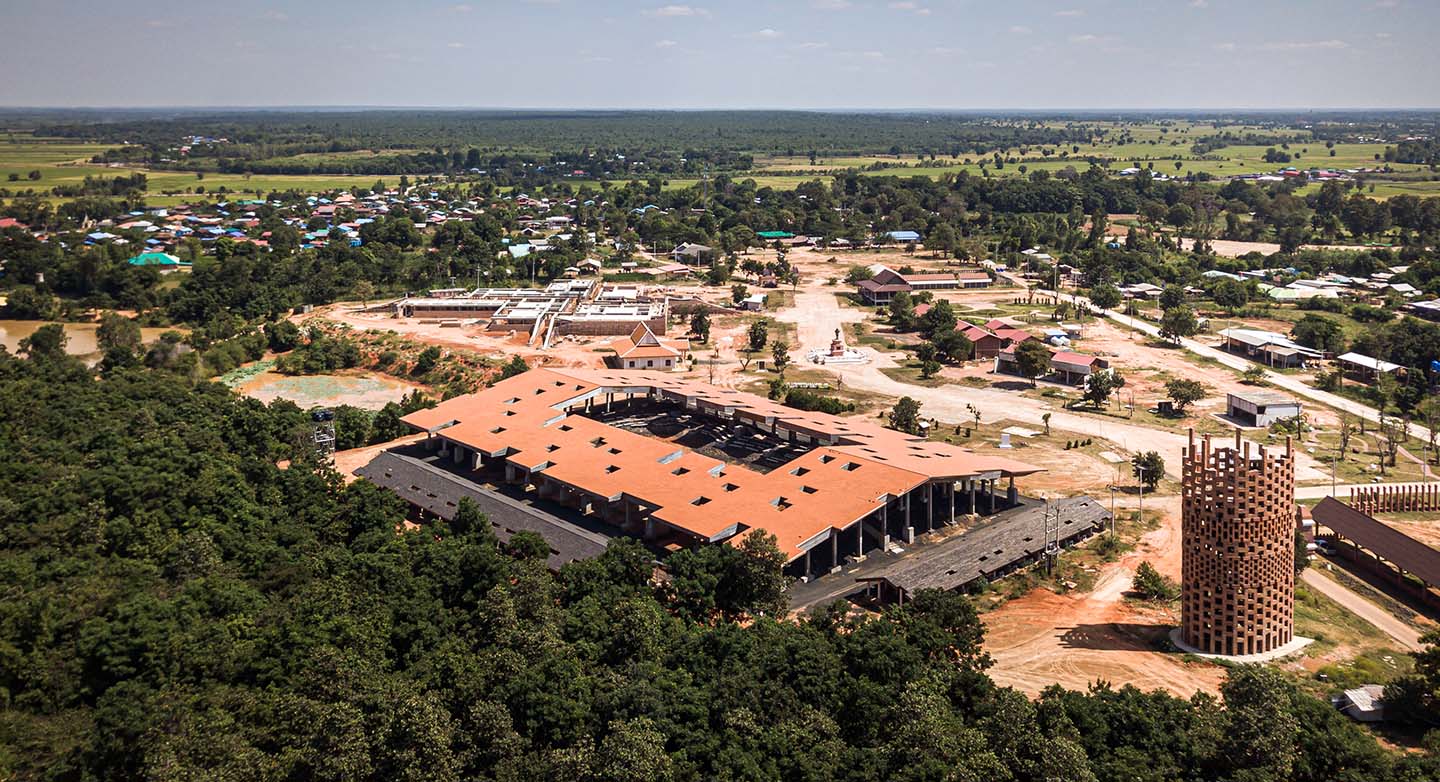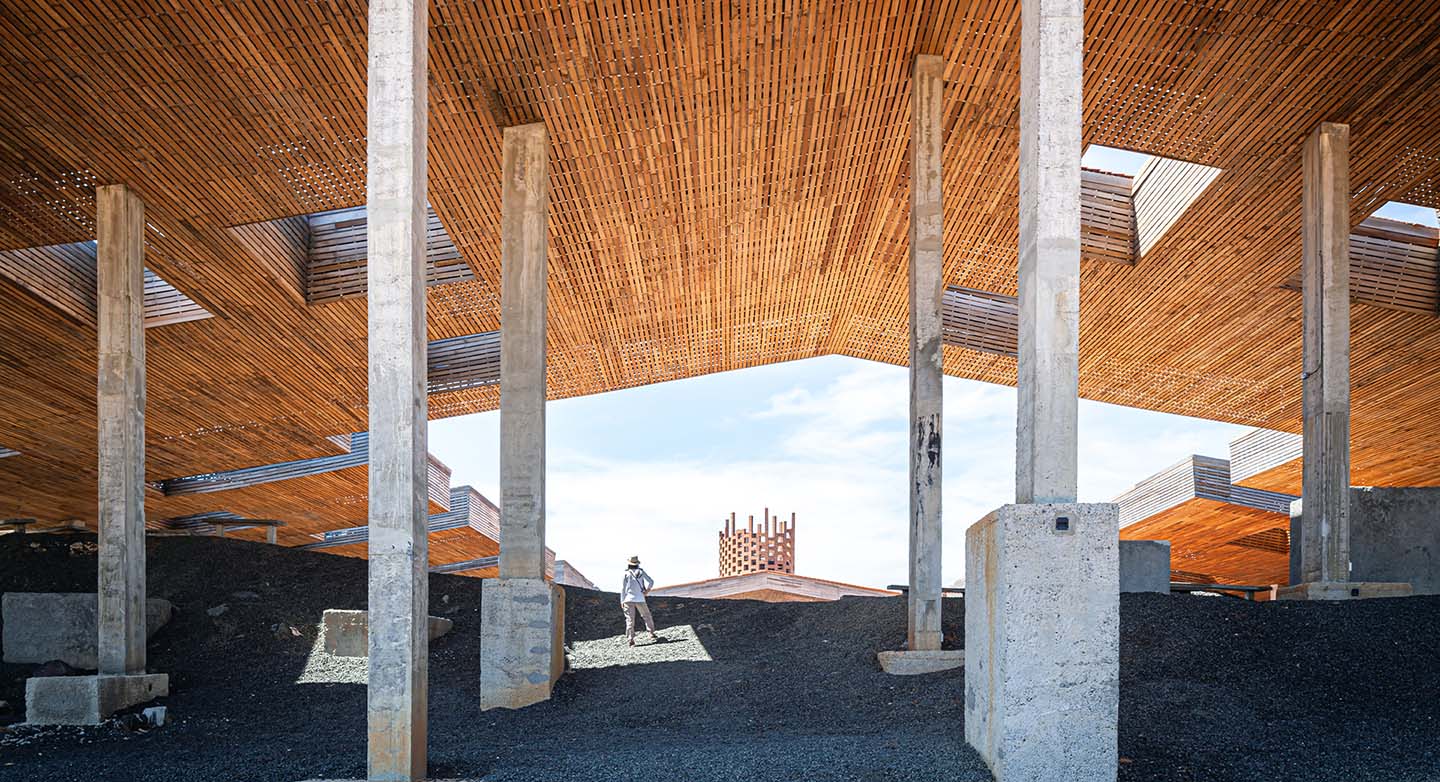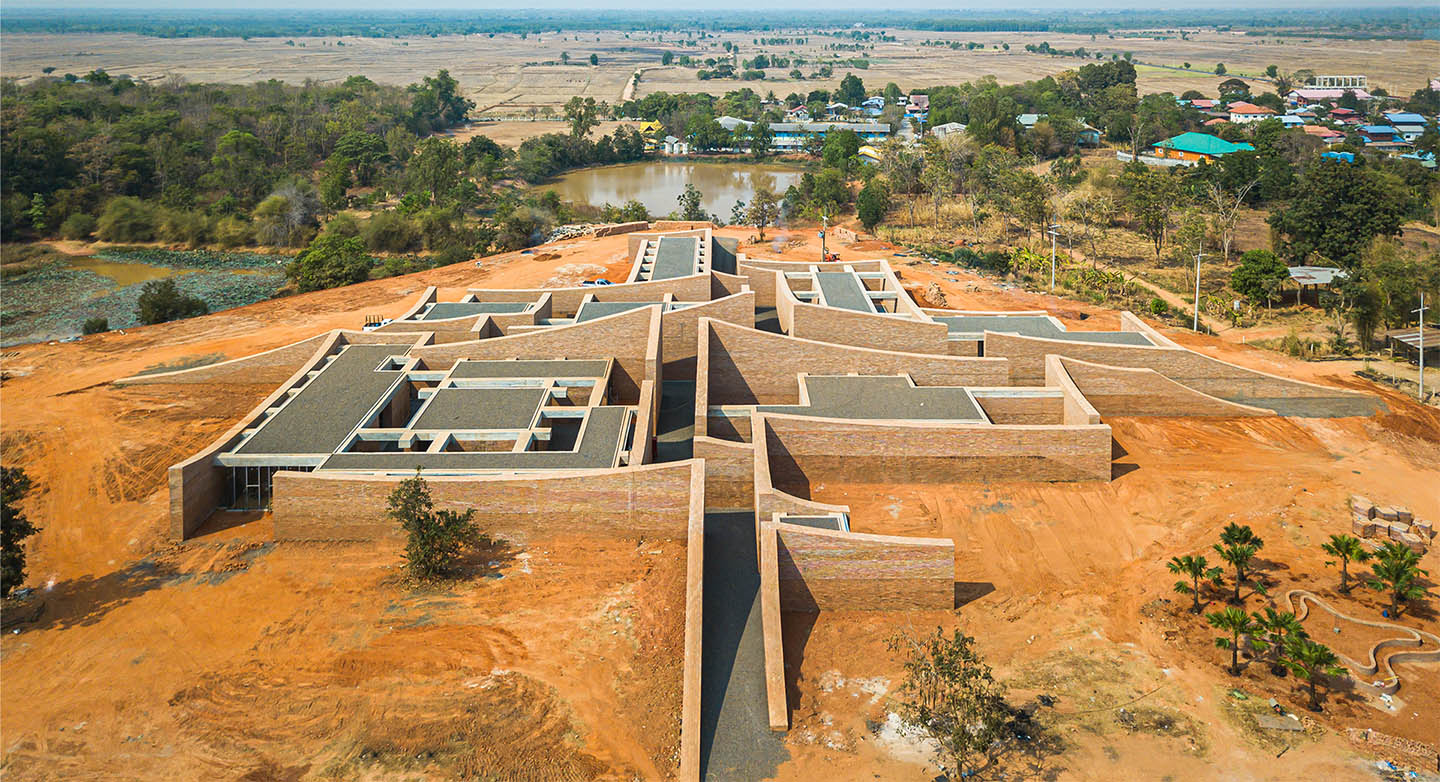Returning Home
A sustainable future for the forest, elephants, and humans
Elephant World is a project initiated in 2015 by the local government of Surin Province in northeast Thailand, where the Kui community has been elephant keepers for centuries. Elephants are considered family members, and living with elephants is inseparable from their tradition and social practice. Surin was once a fertile land of vast forests. However, as a result of economic growth and extensive deforestation, the Kui and their elephants suffered droughts, as well as shortages of food and the medicinal plants the forest once provided.
Therefore, the idea behind Elephant World was to bring the Kui and their elephants back to their homeland and to ensure sustainable living conditions for them. The project is built on abandoned land that was once a forest reserve and the design explores the concept of a “nonhuman center” where people can contribute to the well-being of other species and the natural environment.

Aerial view, Elephant World, Surin Province, Thailand, 2020, Boonserm Premthada/Bangkok Project Studio. Photo © Spaceshift Studio
The Cultural Courtyard is a 70 x 100 m rectangular sloping roof that creates a space for cultural events and religious ceremonies that celebrate the life cycle from birth to death of humans and elephants alike. Consequently, this is a building that needs to accommodate users of two very different scales. Underneath the roof there is a landscape composed of six sloping mounds, evoking the rolling soil that elephants romp around in to cool their body temperature and protect themselves from insects. The mounds encircle three sides of the building, leaving the fourth side open as the entrance to accommodate the size of the elephants.
Opting for the design of earth mounds rather than other materials meant digging soil right next to the site, resulting in a rainwater collection pond for 8,500 cubic meters of water. Water is vital to this arid plateau, which is located four km from the river, and where 200 elephants require a large amount of water every week. The mounds are strengthened by basalt rocks sourced nearby and groundwater wells up as the basalt is mined. Thus, the construction creates another water reservoir in a nearby district.

Interior view, Cultural Courtyard, Elephant World, Surin Province, Thailand, 2020, Boonserm Premthada/Bangkok Project Studio. Photo © Spaceshift Studio
Another attempt to rejuvenate the forest is the Observation Tower. The local Apitong tree has a propeller-like seed that spins and sails through the air and wherever it drops, a new Apitong tree will grow. With the help of the local wind speed of 29–38 km/h, the seeds can travel as far as a 20-meter radius and from the top floor of the 20-meter-high platform Apitong seeds will be dispersed. The Tower is also designed to be in harmony with the climate. Its footprint is oval, with an acute angle on one side to reduce the wind strength and diffuse the heat from the sun.
The Elephant Museum aims to empower the Kui in terms of both its program and its construction methods. The museum gives voice to the villagers and elephants, expressing their long-established familial relationship, as well as the disapproval of the Kui of the cruelty of animal exploitation, and of their hope for the future. Over 480,0000 fired clay bricks are made by hand from loam found in the area with a technique that has been passed down through generations. The construction process creates jobs and income for the locals while increasing the value of the often overlooked local construction material.

Observation Tower, Elephant World, Surin Province, Thailand, 2020, Boonserm Premthada/Bangkok Project Studio. Photo © Spaceshift Studio
After decades of wandering the streets of tourist towns begging for food and money or working in unethical elephant camps, Elephant World provides a source of stable income for the Kui and their elephants through a monthly salary. The villagers comply with regulations that ensure sustainable living conditions and ethical treatment for the elephants.
It is impossible to separate elephants from the Kui culture. Even their social organization depends on their wisdom about elephants. Returning home means the Kui can continue to practice and pass on their heritage to the next generations.

Elephant Museum, Elephant World, Surin Province, Thailand, 2020, Boonserm Premthada/Bangkok Project Studio. Photo © Spaceshift Studio
But without the revived forest and abundant water source, returning home will not be sustainable. And the problem of animal exploitation may reoccur. The Cultural Courtyard proposes that the construction of such a building can create new resources rather than reduce natural resources. The Observation Tower suggests that in addition to being a tourist attraction to admire the scenery, visitors may contribute to restoring the forest. This new way of looking at buildings may be employed by other design projects because the Elephant Museum encourages locals to take pride in their ethnic heritage.
Many buildings are designed to be human centered, iconic and long-lasting. But at Elephant World, the buildings are designed to also accommodate another species with a very different scale from us. And it is hoped that the forest will expand, and architecture will eventually be covered by the greenery. Architecture is only a temporary medium for the two to coexist. While reviving the forest and water source, the Kui earn their living via ecotourism. When the fertile forest fully returns, elephants will roam in the woods, and the Kui and elephants may continue to live, or no longer live under the same roof. But they will live under the same sun, use the same water source, and eat from the same source of food.
Main image: Cultural Courtyard, Elephant World, Surin Province, Thailand, 2020, Boonserm Premthada/Bangkok Project Studio. Photo © Spaceshift Studio
Main image: Cultural Courtyard, Elephant World, Surin Province, Thailand, 2020, Boonserm Premthada/Bangkok Project Studio. Photo © Spaceshift Studio
Video: The World of Elephant, Boonserm Premthada/Bangkok Project Studio
